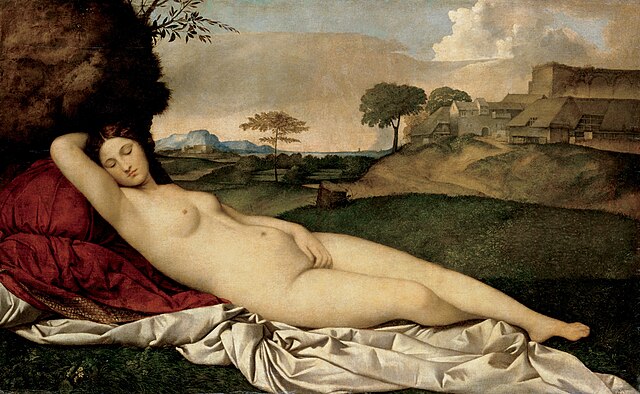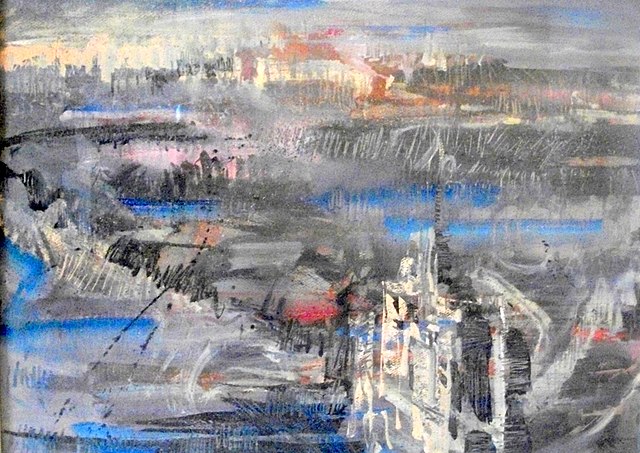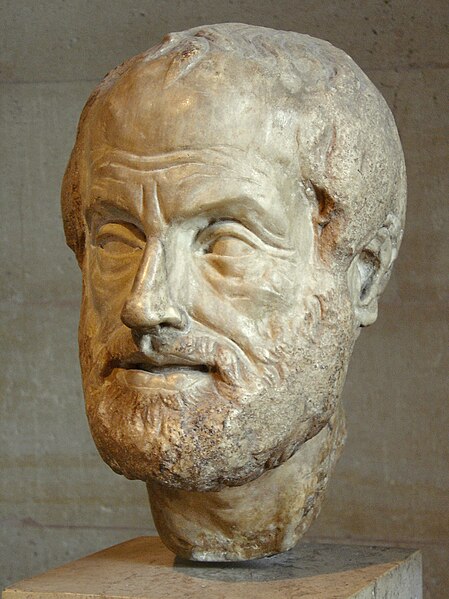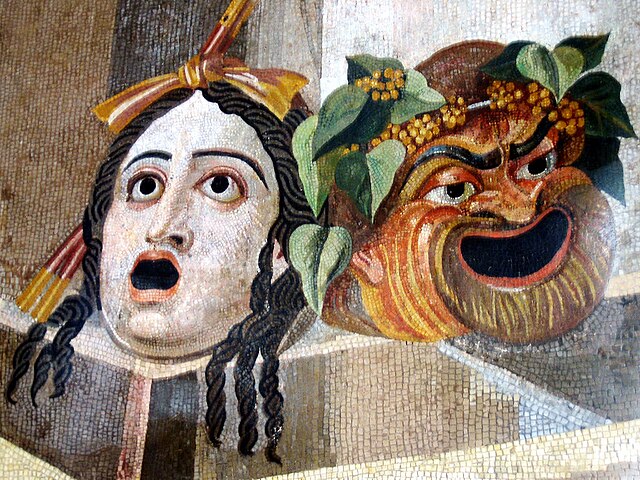Figurative art, sometimes written as figurativism, describes artwork that is clearly derived from real object sources and so is, by definition, representational. The term is often in contrast to abstract art:Since the arrival of abstract art the term figurative has been used to refer to any form of modern art that retains strong references to the real world.
First known reclining nude in Western Art. Introduced the female nude as subject.
Ein Meerhafen ("A Seaport"), a figurative landscape by the Austrian artist Johann Anton Eismann (1604–1698), which depicts buildings, people, ships, and other features that can be distinguished individually; by contrast, the abstract landscape below suggests its subject matter without directly representing it
Untitled abstract expressionist landscape by the American artist Jay Meuser (1911–1963)
Jean Auguste Dominique Ingres, Le Bain Turc (The Turkish bath), 1862, oil on canvas, 108 × 110 cm, Louvre, Paris
Representation is the use of signs that stand in for and take the place of something else. It is through representation that people organize the world and reality through the act of naming its elements. Signs are arranged in order to form semantic constructions and express relations.
Bust of Aristotle, Greek philosopher
Reproduction of the Mona Lisa
Greek theatrical masks depicted in Hadrians Villa mosaic
Charles Sanders Peirce








